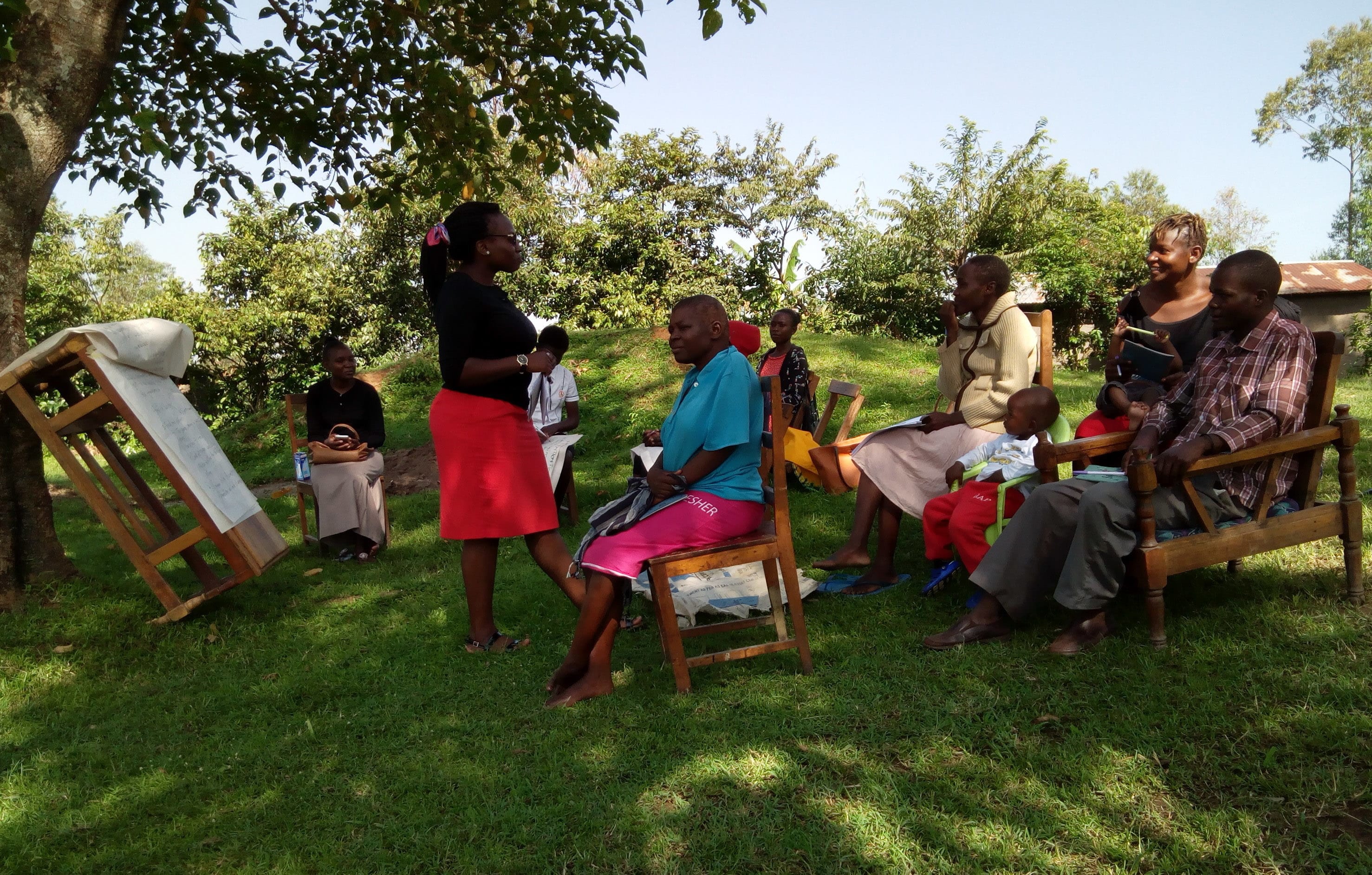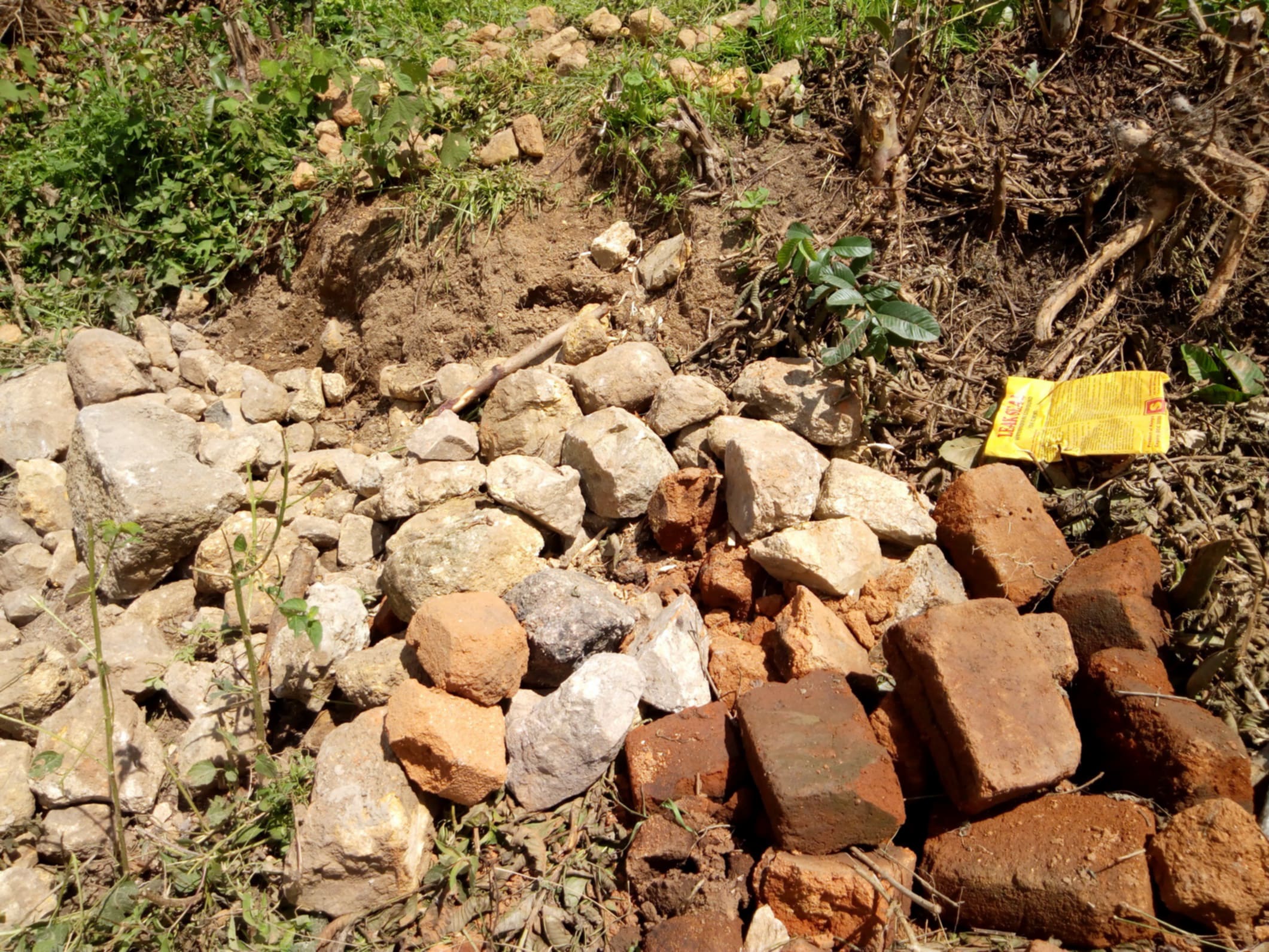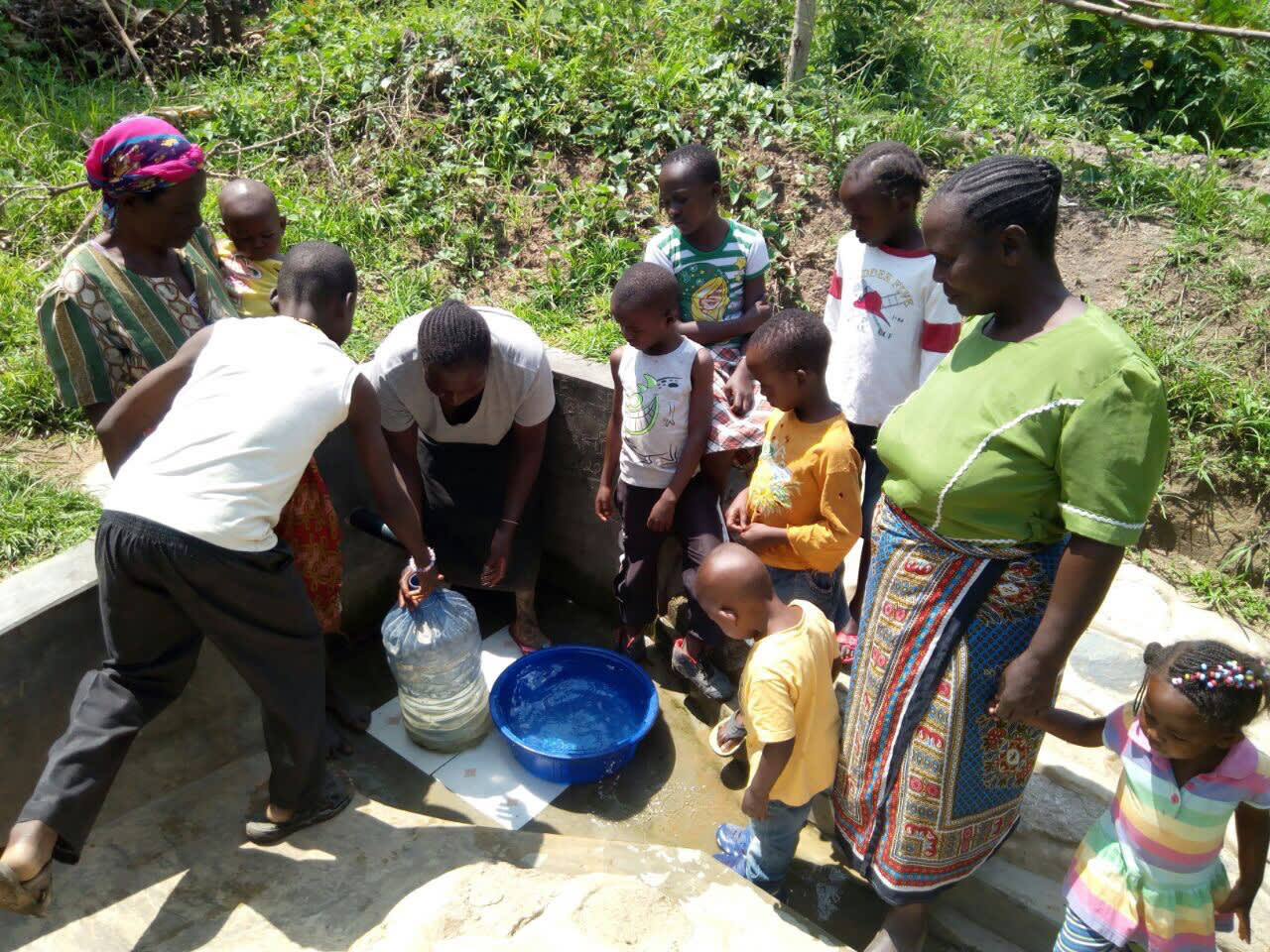In Shikoti Community, women and men wake up by 6:30 am to go looking for enough water to make bricks, which is their main economic activity. Other than this, they also cultivate maize as a cash crop. For those community members who don’t venture into maize farming, they at least plant enough in a kitchen garden for their own family's food.
Some also rear cattle, including bulls that are used in bullfighting, a common social and leisure activity in this community. Men take special care of their bulls to make them strong for bullfighting. When individuals pit their bulls against each other, the winner is given cash for their bull. This motivates them to work hard making sure their bulls are strong and ready to fight.
Water Situation
A major source of water in Shikoti Community is Ambale Spring. It is an unprotected source of water that is open to many different sources of contamination. It pools at the surface, and different kinds of aquatic critters make the water their home. The growing tadpoles are the most visible, as can be seen in the pictures.
The water is especially dangerous during the rainy seasons, when rainwater washes different contaminants like feces, farming chemicals, and garbage into the spring. Animals are also free to come and go to quench their thirst.
People most commonly carry a 20-liter jerrycan and smaller container for fetching. The cup is dunked into the spring over and over again until the larger jerrycan is filled. When the spring's water is delivered back home, it is poured into different containers by intended use. Some water is kept outside, in the kitchen, and by the latrine. A covered clay pot is kept in the main sitting room for drinking, because it is believed to keep the water cool like a refrigerator.
After drinking this water, people suffer from waterborne diseases like cholera, typhoid, and diarrhea.
Sanitation Situation
Less than a quarter of households have a pit latrine, with the few in existence shared with neighbors. This overuse of latrines makes them dirty and smelly, attracting clouds of flies. The walls are made of mud, and the roofs are made of iron sheets or thatched grass. Because of these poor conditions, many community members, especially children, prefer to relieve themselves in the privacy of bushes.
There are no hand-washing stations, and only a few helpful tools like dish racks and clotheslines. Garbage is piled up near gardens and farms. When the pile gets too high, it is burnt. Anything that composts can be used as fertilizers for whatever's growing.
Plans: Hygiene and Sanitation Training
Community members will attend hygiene and sanitation training for at least two days. This training will ensure participants are no longer ignorant about healthy practices and their importance. The facilitator plans to use PHAST (Participatory Hygiene and Sanitation Transformation), CLTS (Community-Led Total Sanitation), ABCD (Asset-Based Community Development), group discussions, handouts, and demonstrations at the spring.
Training will also result in the formation of a committee that will oversee operations and maintenance at the spring. They will enforce proper behavior around the spring and delegate tasks that will help preserve the site, such as building a fence and digging proper drainage.
Plans: Sanitation Platforms
On the final day of training, participants will select five families that should benefit from new latrines.
Training will also inform the community and selected families on what they need to contribute to make this project a success. They must mobilize locally available materials, such as bricks, clean sand, hardcore, and ballast. The five families must prepare by sinking a pit for the sanitation platforms to be placed over. All community members must work together to make sure that accommodations and food are always provided for the work teams.
Plans: Spring Protection
Fetching water is predominantly a female role, done by both women and young girls. Protecting the spring and offering training and support will therefore help empower the female members of the community by giving them more time and efforts to engage and invest in income-generating activities.
In addition, protecting the spring will ensure that the water is safe, adequate and secure. Construction will keep surface runoff and other contaminants out of the water. "We have really suffered in this village with waterborne diseases of the unprotected water," said Catherine Ambale. If the system constructed at Ambale Spring is well-managed and maintained, then the clean water will keep community members healthy for years to come.

 Protected Spring
Protected Spring
 Rehabilitation Project
Rehabilitation Project



































